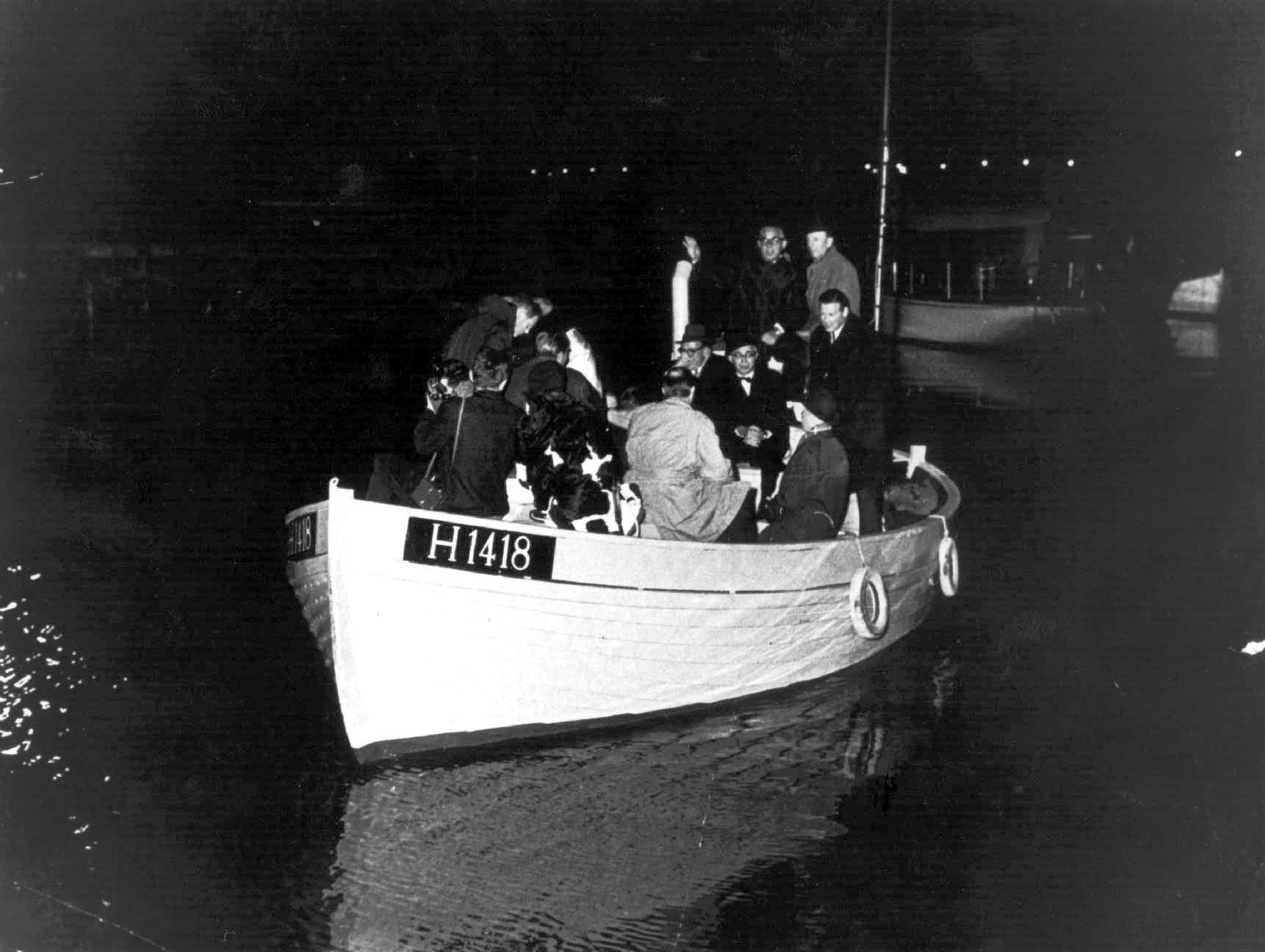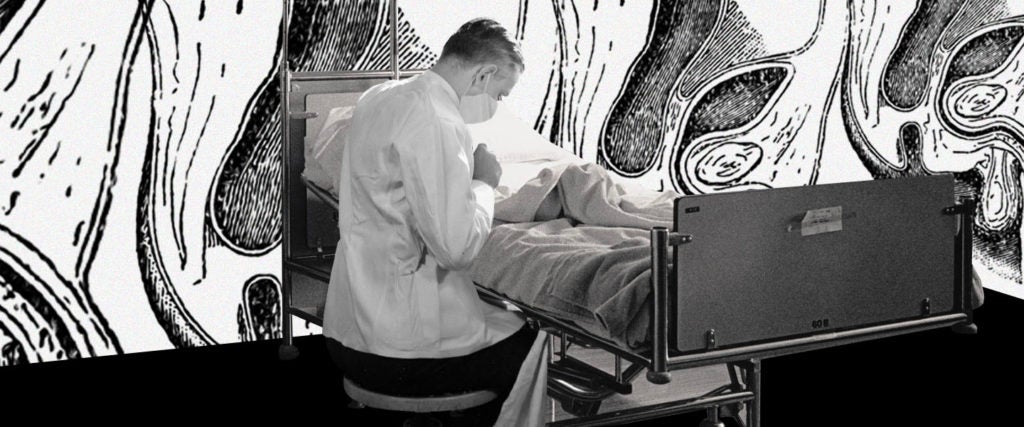Ernst Trier Mørch was born in Denmark in 1908, and by the time the Nazis turned up in his home country in 1940, he was a working doctor, anesthetist and scientist. He had invented a vastly better respirator (to allow anesthetized patients to breathe) than had ever been around before, building it out of an old sewer pipe and bicycle pump. And he did pioneering research into dwarfism and genetics, which went on to be used in the aftermath of the Hiroshima and Nagasaki bombings to determine how much damage radiation did to survivors’ DNA.
In other words, even if he’d stopped there, he’d have been a great man.
But when the Germans arrived, he joined the resistance, and along with his colleagues, he began doing what he could to combat the Nazi occupiers. To start, they founded an underground newspaper using stolen printing equipment, sharing news of Allied actions to undermine German propaganda. (Mørch subsequently had a half-million dollar bounty placed on his head.) They also managed to get ahold of German bombing plans and sneak them to Allied forces in London by hiding microfilm up a messenger’s butthole in a little tube.
In 1943, the occupying forces announced they were going to deport all the Jews in Denmark, about 7,000 people in total, to the concentration camps. The resistance began doing what it could to hide them, admitting people to the hospital under extremely Danish names like Christiansen while hiding others in churches. It wasn’t enough, however; the Gestapo were still determined to find — and eradicate — all Danish Jews.
This is where dicks come in. The non-Jewish population of Denmark weren’t generally circumcised, so the Gestapo got in the habit of asking any man they suspected might be Jewish to drop his trousers and show them his penis. “If he was circumcised, they shot him,” Mørch told the Chicago Tribune many years later.
Mørch and his fellow doctors were approached by Jewish refugees in a bid to uncircumcise them, something he described as “a hell of a job.” Mørch used skills he had acquired as a young lieutenant in the Royal Danish Army Medical Corps, where one of his duties was sewing horses’ ears back together when officers accidentally sliced bits off while withdrawing their swords. “We had to transplant little strips of skin, and stitch them; it was a real mess,” he recalled to the Tribune. “It took several operations and looked really terrible. But it confused the Gestapo enough that at least they wouldn’t shoot them on the spot.”
Some of the people he helped were understandably less than enthusiastic about having the procedure once they saw other people’s results. “Our patients became terribly embarrassed,” Mørch explained. “When their wives and sweethearts saw our work, they’d point their fingers and laugh, ‘What is that?’ Many men became impotent. They finally decided they’d rather risk the Nazis. So we stopped uncircumcising them.”
Instead, the resistance began smuggling people out, paying fishermen — with money Mørch and company had stolen from the Nazis — to hide them in their boats and sail them to Sweden. Once the Nazis got wind of this, they began sending bloodhounds onto fishing boats to sniff out any refugees hiding there.
Mørch’s fix? Cocaine. He and a pharmacist friend, Oluf Hubner, discovered that if they dried rabbit blood and made it into a powder, it sent Hubner’s dog bonkers with delight. Next, they added cocaine — nine parts blood, one part coke — and had a bloodhound-blocking powder. The dogs would return to their Nazi masters happy, having failed to discover anyone, their noses anaesthetized by the cocaine.

There was, however, the problem of keeping babies and small children, two groups that aren’t always the best at staying silent, quiet. Here, Mørch’s out-of-the-box anesthesia skills came to the fore once more, giving parents barbiturate suppositories — buttholes again — that they could use to put their children into life-threatening comas that doctors waiting in Sweden could revive them from.
In the end, though, of the 7,000 Jews in Denmark, 6,500 escaped thanks to Mørch and the rest of the resistance.
If that weren’t enough, Mørch was also involved in the White Buses operation, in which some 21,000 concentration camp prisoners were rescued and taken home by the Red Cross — not that it wasn’t without its dire moments. At one point Mørch’s convoy of buses filled with sick and dying prisoners was trapped by an Allied bombing raid on Hamburg. Luckily, he was with Count Folke Bernadotte, head of the Swedish Red Cross at the time and the man who had negotiated the rescue operation. “I gave Bernadotte a dime,” Mørch recounted, “and asked him to call his father, who happened to be King of Sweden, and ask him to call his cousin, who happened to be King of England, and ask him to call General Eisenhower, who happened to be in charge of bombing Hamburg, and ask him to hold things up for a few minutes. It worked! The bombing ceased. In disbelief, we dashed through the burning city. Then the bombing started right up again.”
Mørch packed a lot into the rest of his life, too. He was the first man ever tasked with anesthetizing the King of Denmark’s horse, something he achieved by rigging up an apparatus he had to jump up and down on to keep the horse breathing. Moreover, the ventilators, tracheostomy tubes and laryngoscopes he developed both improved and saved countless lives, and his methods became more and more widespread. He learned to fly a plane as well, because why wouldn’t he? As an older man he moved to Florida and frequently treated dangerous criminals in prison to spare nursing staff the trouble, becoming a deputy sheriff in the process.
Mørch died in 1996 at the age of 87, and while hardly unheralded — he was by all accounts incredibly popular, won umpteen awards, the New York Times ran a glowing obituary and the anesthesia world’s leading journals published extensive looks at his life — the kind of heroism, determination and creativity he showed in every area of his life surely warrants being even better-known.
The same for his fearlessness, which during the Danish resistance at least, was as much about his relentlessness as anything else. “That was the most exhilarating time of my life,” he once said. “I didn’t have time to be afraid.”

